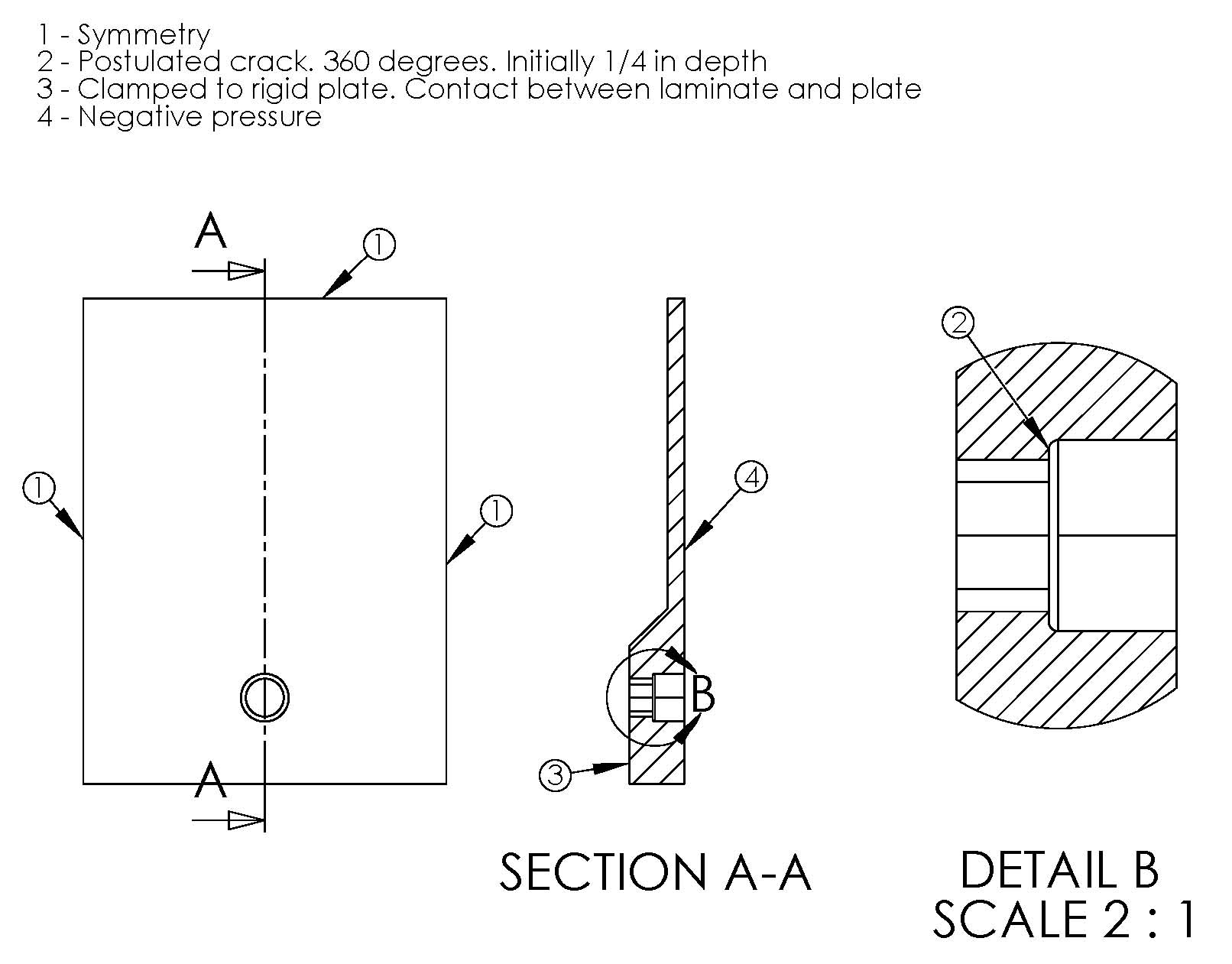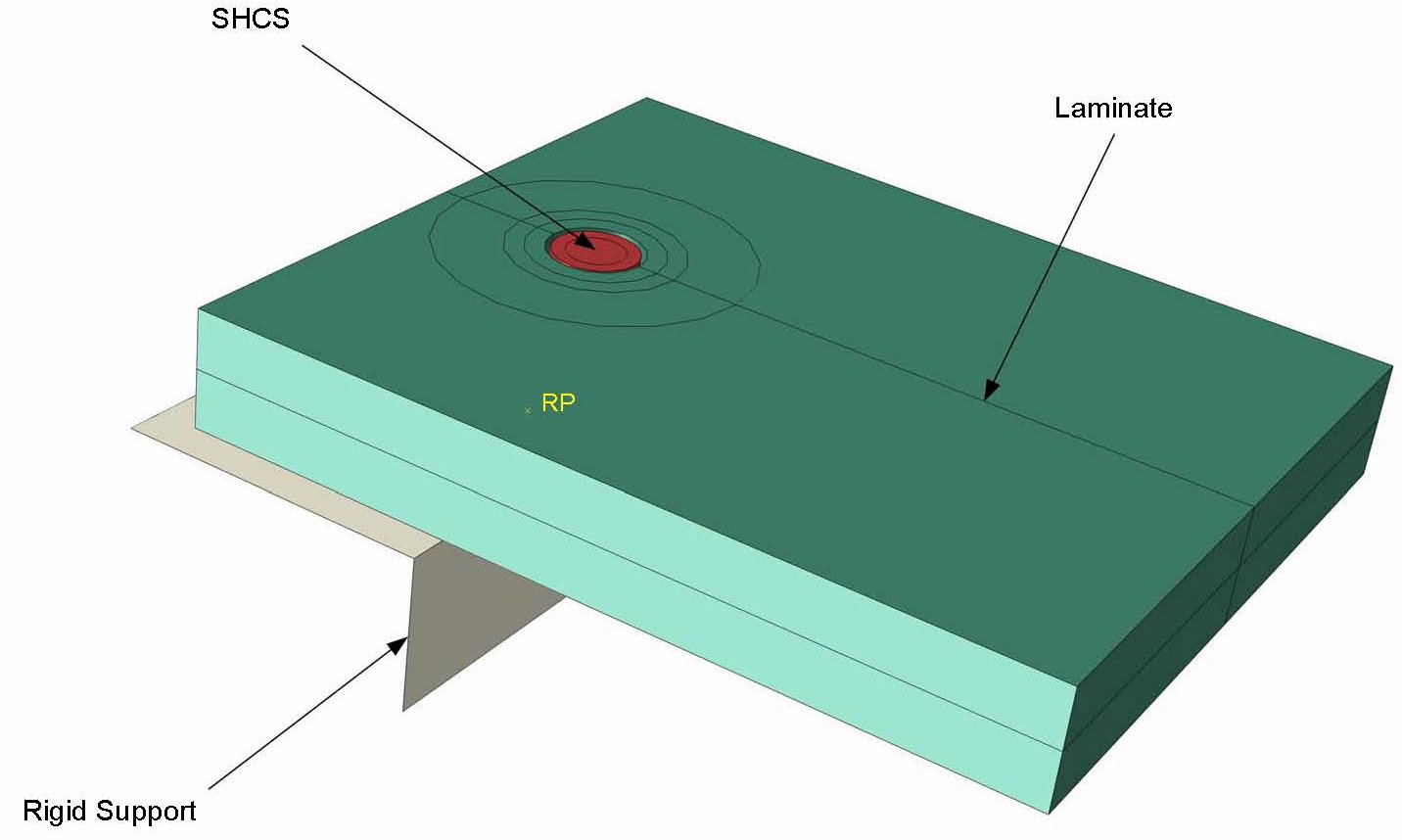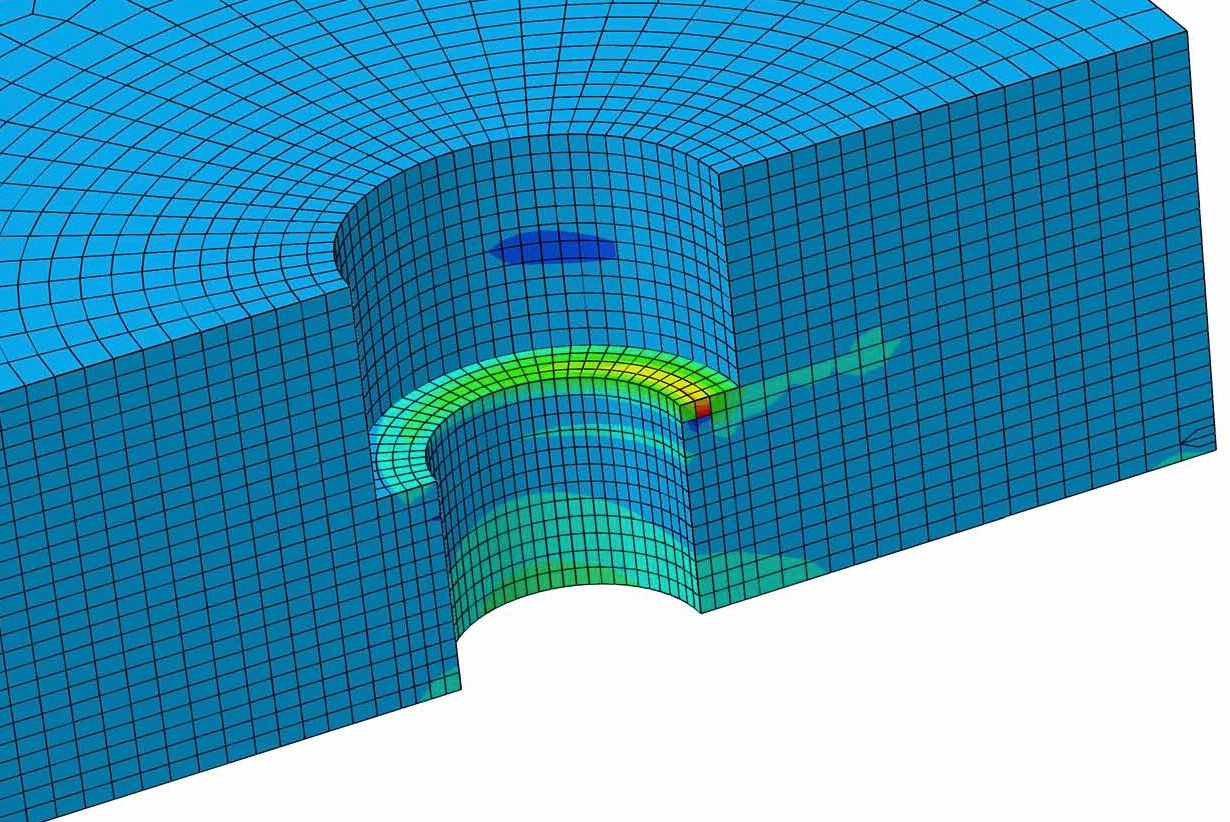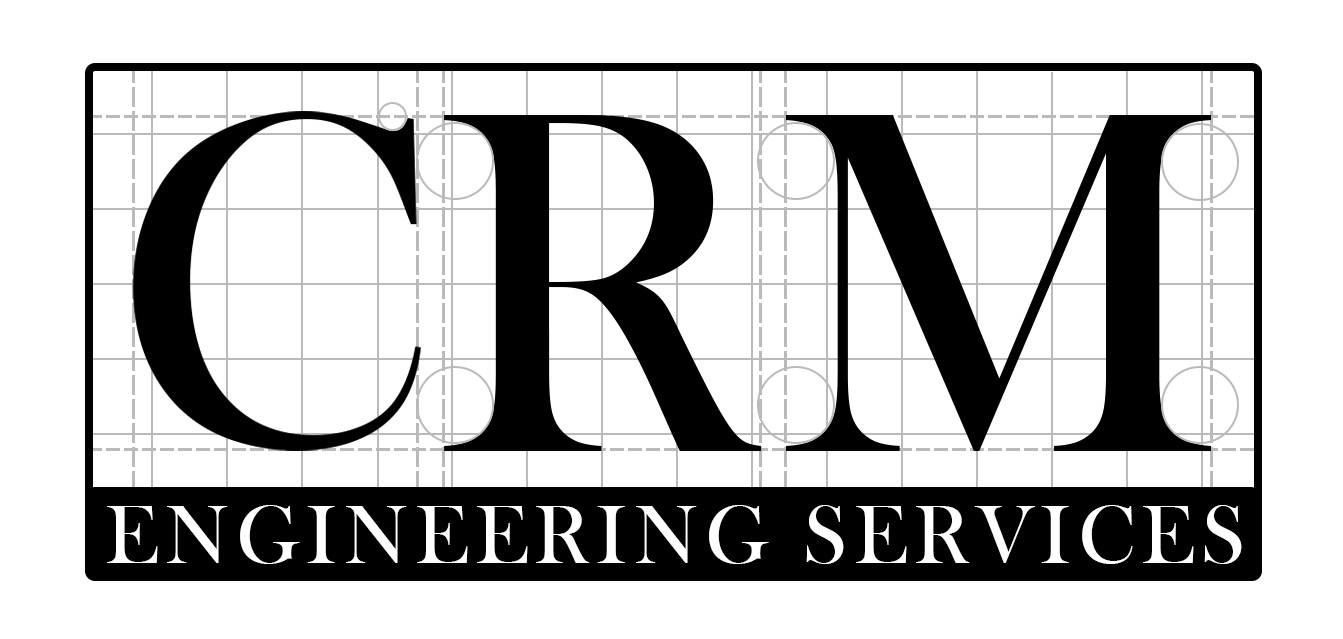Fracture Mechanics Laminated composites
The client engaged CRM Engineering Services to develop a relationship between crack diameter, SHCS size, and plate thickness to the crack stress intensity factor for Mode I and II crack opening.


Analysis Finite element model
Although the material was presumed to behave linearly, contact between the SHCS and the countersunk hole and between the laminated composite plate and the attachment structure necessitated a nonlinear analysis. Modeling stationary discontinuities, such as a crack, with the conventional finite element method requires that the mesh conforms to the geometric discontinuities. Therefore, considerable mesh refinement is needed in the neighborhood of the crack tip to capture the singular asymptotic fields adequately. Modeling a growing crack is even more cumbersome because the mesh must be updated continuously to match the geometry of the discontinuity as the crack progresses. The extended finite element method (XFEM) alleviates the shortcomings associated with meshing crack surfaces. XFEM is an extension of the conventional finite element method. The presence of discontinuities is modeled by enriched functions in conjunction with additional degrees of freedom.
Results
A full-factorial parameteric study combined with judicious selection of non-dimensional variables allowed us to create fitted equations for the stress intensity factors.

